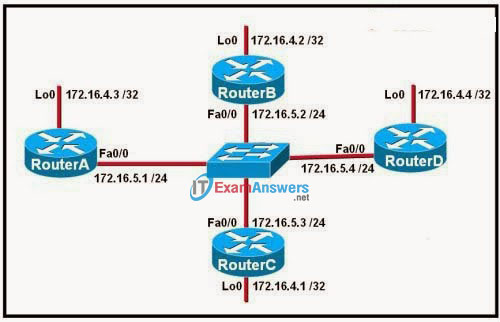Refer to the exhibit. RouterA, RouterB, and RouterC in the diagram are running OSPF on their Ethernet interfaces. Router D was just added to the network. Routers are configured with the loopback interfaces (Lo 0) that are shown in the exhibit. What happens to the OSPF DR/BDR after RouterD is added to the network?

- RouterB takes over as DR and RouterD becomes the BDR.
- RouterD becomes the BDR and RouterA remains the DR.
- RouterD becomes the DR and RouterA becomes the BDR.
- RouterC acts as the DR until the election process is complete.
- RouterD becomes the DR and RouterB remains the BDR.
- There is no change in the DR or BDR until either current DR or BDR goes down.
Exam with this question: CCNA Exploration 2: ERouting Chapter 11 Exam Answers
Please login or Register to submit your answer
